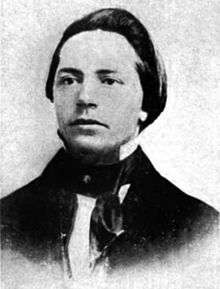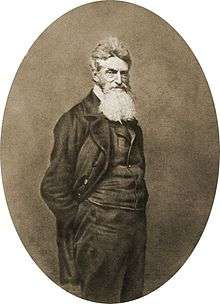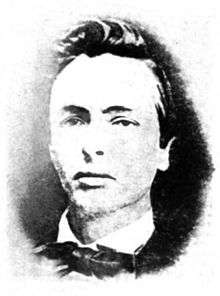Springdale, Iowa
Coordinates: 41°40′N 91°16′W / 41.67°N 91.26°W


Springdale is a small unincorporated community in Cedar County, Iowa, United States. Historically, the town was predominantly settled by Quakers,[1] and was a way-station in the Underground Railroad. Its most famous residents were the militant abolitionist John Brown, who resided at John Hunt Painter's house near Springdale while making preparations for the raid on Harpers Ferry, and Edwin and Barclay Coppock, local youths who participated with Brown during the raid.[2][3] Springdale was also the birthplace of Lawrie Tatum, a frontier Indian agent and the legal guardian of future President Herbert Hoover. No downtown business district remains in Springdale, it is a cluster of houses with a United Methodist church. William Maxson's home, where Brown's men were quartered, was razed in 1938, but its location is marked by a plaque provided by the Daughters of the American Revolution. Although often described as Quaker, Maxson was raised in the faith but at the time of Brown's visit considered himself a follower of Spiritualism.[4]
Historic residents
-

Edwin Coppock
- ^ Both Coppock photos from A topical history of Cedar County, Iowa, Volume 1 (1910) Clarence Ray Aurner, S.J. Clarke Publishing Company
References
- ↑ The History of Cedar County, Iowa: Containing a History of the County, Its Cities, Towns, etc. Western Historical Company. 1878. p. 510.
- ↑ John Brown and His Followers in Iowa Midland Monthly Magazine (1894) Vol. 1, pp. 262-267.
- ↑ Jones, Louis Thomas (1914). The Quakers of Iowa. Iowa City: The State Historical Society of Iowa. p. 193. "A little over a year after his first visit to the Springdale neighborhood, Brown reappeared late in December, 1857—this time with some ten companions and for purposes which he seemed not anxious to have known. The men were lodged with a Quaker, William Maxon [or Maxson], about three miles northeast of the village of Springdale, with Brown agreeing to give in exchange for their keep such of his teams or wagons as might seem just and fair. Brown himself was taken into the home of John H. Painter, about a half-mile away; and all were welcomed with that unfeigned hospitality for which the Friends have always been known. Not many days passed by until suspicions were aroused concerning this group of men; for the word was spread that strange maneuvers, much like military drill, were daily being conducted on the lawn at the Maxon [or Maxson] home." "The men brought by Brown to Springdale on this occasion were his own son, Owen Brown, Aaron D. Stevens, John Kagi, John E. Cook, Richard Realf, Charles W. Moffitt, Luke J. Parsons, Charles H. Tidd, William Leeman, and Richard Richardson, a colored man. See Lloyd’s John Brown Among the Pedee Quakers in Annals of Iowa, Vol. IV, p. 712."
- ↑ Lord, Jeanette Mather, "John Brown: They Had a Concern," West Virginia DIvision of Culture and History Vol. 20, No. 3 (April 1959), pp 163-183


